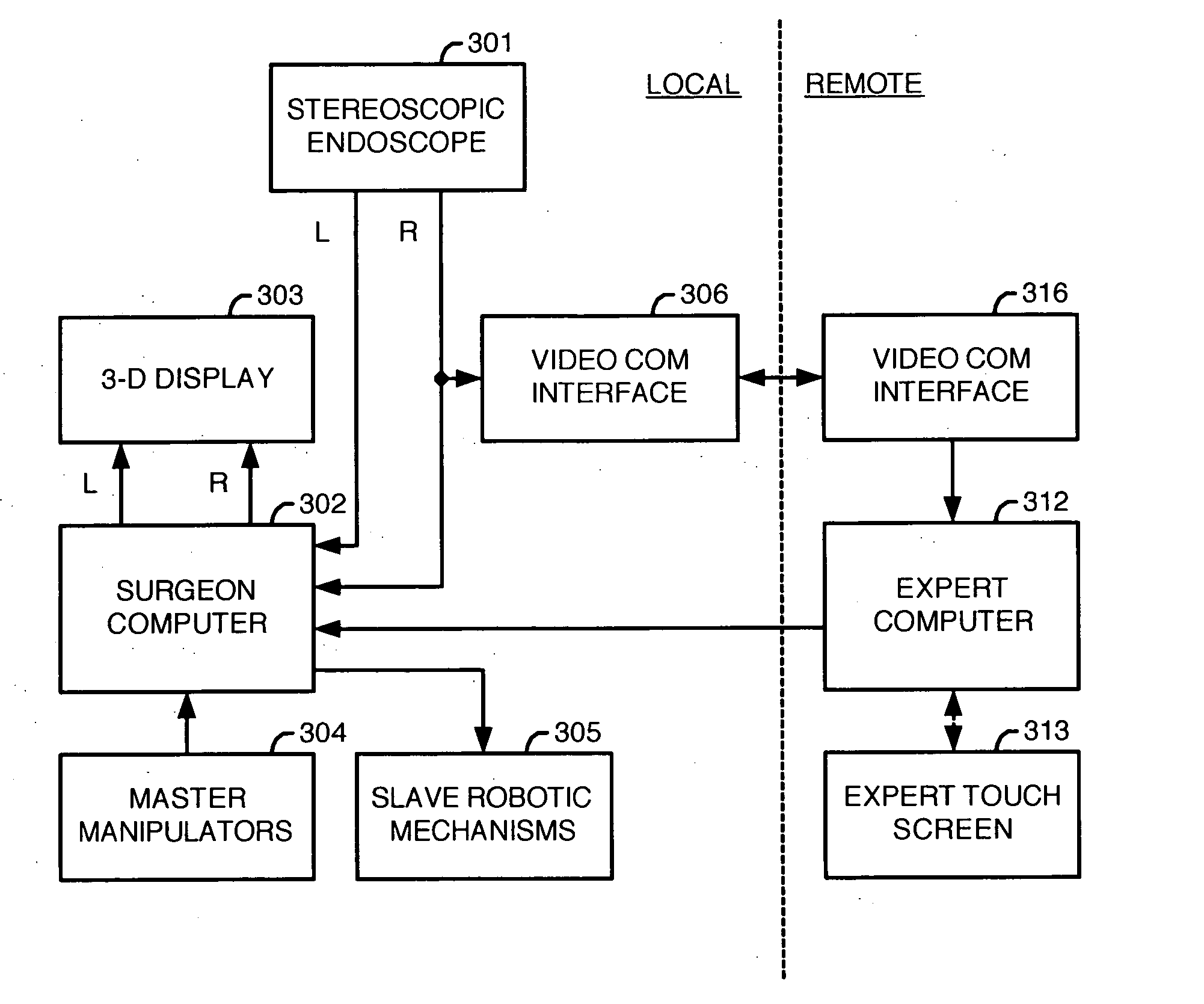Medical robotic system providing three-dimensional telestration
a robotic system and medical technology, applied in the field of minimally invasive robotic surgery systems, can solve the problems of reducing the dexterity of surgeons performing conventional laparoscopy or thoracic surgery, steep learning curve, and serious degradation of their ability to see and touch the operating field, etc., and achieves dramatic reduction in dexterity compared to open surgery
- Summary
- Abstract
- Description
- Claims
- Application Information
AI Technical Summary
Benefits of technology
Problems solved by technology
Method used
Image
Examples
Embodiment Construction
[0033]FIG. 1 illustrates, as an example, a medical robotic system 100 providing three-dimensional telestration. In the example, an Operating Surgeon (S) is performing a minimally invasive surgical procedure on a Patient (P), and a Mentor Surgeon (M), who is an expert or at least more experienced in the minimally invasive surgical procedure, mentors or advises the Operating Surgeon (S) during the procedure. One or more Assistants (A) positioned at the Patient (P) site may also assist the Operating Surgeon (S) during the procedure.
[0034] The system 100 includes a surgeon master control station 151 (also referred to herein as the “surgeon console”) operative by the Operating Surgeon (S), a slave cart 120 having three slave robotic mechanisms 121˜123, and mentor master control station 131 (also referred to herein as the “mentor console”) operative by the Mentor Surgeon (M). The mentor master control station 131 is shown separated from the surgeon master control station 151 by a dotted ...
PUM
 Login to View More
Login to View More Abstract
Description
Claims
Application Information
 Login to View More
Login to View More - R&D
- Intellectual Property
- Life Sciences
- Materials
- Tech Scout
- Unparalleled Data Quality
- Higher Quality Content
- 60% Fewer Hallucinations
Browse by: Latest US Patents, China's latest patents, Technical Efficacy Thesaurus, Application Domain, Technology Topic, Popular Technical Reports.
© 2025 PatSnap. All rights reserved.Legal|Privacy policy|Modern Slavery Act Transparency Statement|Sitemap|About US| Contact US: help@patsnap.com



